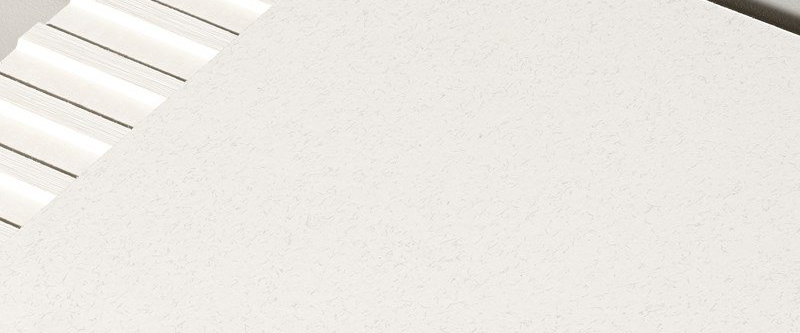The CIE Chassis Factory, designed for the manufacture of bus and lorry parts, including engines and eventually power units for diesel locomotives – all previously imported from the UK for assembly here – was the first of Michael Scott’s famous trilogy of buildings for the new national transport company (the others being Busáras and Donnybrook bus garage). CIE came into being on January 1, 1945, following the amalgamation of the Dublin City Transport Company, the Great Southern and Western Railway Company and 24 other privately owned transport operators. The Chassis Factory was built adjoining the main railway and vehicle assembly works already existing at Inchicore.
Each of Scott’s three buildings occupies a special moment in the development of modern architecture in Ireland: Inchicore was intended as the State’s first venture into heavy engineering, the only factory in Ireland capable of making precision engineering components; Donnybrook was designed as a prototype 100-unit bus garage, meant to be replicated in five Dublin locations as well as in regional cities; and Busáras, conceived as CIE’s headquarters, was arguably the greatest Irish building of the 20th century.

But the existence of each was also threatened following the election of the first Inter-Party Government in February 1948, ending 16 years of Fianna Fáil rule. Busáras became an abandoned, ghostly structural shell for several years, its fate uncertain until it was eventually allocated to the Department of Social Protection; implementation of Donnybrook’s prototype experiment was cancelled and its reusable vaulted formwork destroyed; and Inchicore, although built, never made it into production, even as its machinery sat at the CIE Broadstone Works until it was eventually sold off, having cost almost as much as the factory building itself. Instead, a deal was struck with Leyland to supply bus chassis at cost to CIE, with the supplier recovering the profits on spare parts and stock supplied on a rolling basis. As Michael Scott later said, “[The government] scrubbed all the machinery and gave the factory to the Board of Works for storage.” Strange days indeed.
Yet the legacy of these three buildings is great. When commissioned, Michael Scott was working out of 29 Clare Street. With these three projects he transformed both modern architecture and the structural and mechanical and electrical engineering professions in Ireland by bringing the Danes, Ove Arup and Jørgen Varming, to Dublin, where they all set up together for a while in 19 Merrion Square. Scott also invested in younger architects. Buckley and O’Gorman was invited to design the adjacent mini-me Tool Room to manufacture precision tools for the factory. It seems James M Brennan, a former employee of Scott’s, was also involved, according to Aodhagán Brioscú, who oversaw the factory’s completion.

But who actually designed the Chassis Factory at Inchicore? The office file was opened in 1946 and given the job number 4605. However, there are undated drawings in the Irish Architectural Archive that appear to precede this, presumably from 1945. While titled Michael Scott, they do not employ the typical office title block (individually hand-drawn and lettered though it was at the time), suggesting the wild possibility that they may even have been secretly farmed out for conceptual development before the office file was officially opened.
At least five variant schemes were prepared (designated A to E), the first of which included three tennis courts and a clubhouse. Who drew them? Patrick Scott was still a novice (BArch 1945). Kevin Roche and Kevin Fox too. Wilfrid Cantwell, who graduated the year before them? He was busy on Busáras. It is tantalizing to speculate. Although the most obvious candidates would appear to be Buckley and O’Gorman, who received several CIE commissions through Scott (and had an office at 21 Merrion Square), we have as yet no access to any of their drawings for comparison.

Noel Moffett once told me he worked for a while for Michael Scott, without offering specific details. (He said he saw the press posters announcing the outbreak of WW2 outside Scott’s office on Merrion Square; but he was in London then. Perhaps he meant the end of the war?) Some graphical tics that we associate with Moffett (BArch 1938) are apparent: in the perspectives, the stencil (sparingly used) and the proposal for a gatehouse, which displays an uncanny, if crude, affinity with his house designs for Brian Boydell and House Moffett of 1944, none of which were built. But the hand-lettered ‘f’s in the title block do not resemble Moffett’s. Still a mystery then. But the answer surely lies somewhere within these charmingly naïf handwritten title blocks.
The Chassis Factory is an elegant, rational, industrial building, its mechanistic qualities reflected in its steel frame, patent glazing (part aluminium, part steel), capacity for extension by 50% (westwards, where the concrete standing was omitted for this reason), under-floor heating, compressed air hoses incorporated within the stanchion casings, the sleek, triple-height, east-end crane bay, and a memorable water tower supported on stilts. The football-pitch scale of the bright, flexible interior – measuring 330ft by 150ft with a single central row of columns at 30ft centres, and its 12-bay, saw-tooth roof and western gables sheeted in Big Six corrugated fibre cement – remains impressive. According to Scott, it was considered for the RIAI Gold Medal (which he would later win for Busáras) for the period 1947-49, although the building was not actually handed over to CIE until May 1950.

The contract had been awarded to G & T Crampton in June 1947. Although the initially unpopular project-management bar chart was first introduced on Irish sites at this time, the 92-week contract was ultimately extended by an improbable additional 64 weeks, “due to delays [particularly in importing materials] which were not, nor could have been, provided for in the original contract.” Meanwhile the exceptionally severe winter and fuel shortages of 1947 had required the cancellation of many rail and bus services, throwing CIE’s finances into such turmoil that the company was nationalised in 1950.
The building, which has been rated of Regional significance by the National Inventory of Architectural Heritage on architectural and technical grounds as a “significant … [and] rare example of its type,” remains in use as the OPW’s Central Engineering Workshop, which is responsible for canals, drainage and flood relief. For those who would like to find out more, I can recommend Sinead Bourke’s 2015 thesis (Higher Diploma in Applied Building Repair and Conservation, TCD) which brings the story of the Chassis Factory right up to date, including one more twist in the tale: of how this wonderful, pioneering structure was nearly demolished for an affordable housing PPP in 2008-09.



Architect: Michael Scott Architect 1945 – 1950
Location: Jamestown Road, Inchicore, Dublin
Photography: Copyright unknown, G & T Crampton (owner) courtesy Crampton Collection, held by Assoc Prof Dr Joseph Brady, published by UCD Library, University College Dublin
Curated By: Shane O'Toole
Feeling inspired? You can enjoy more Building of Month articles curated by Shane O'Toole by clicking below.

